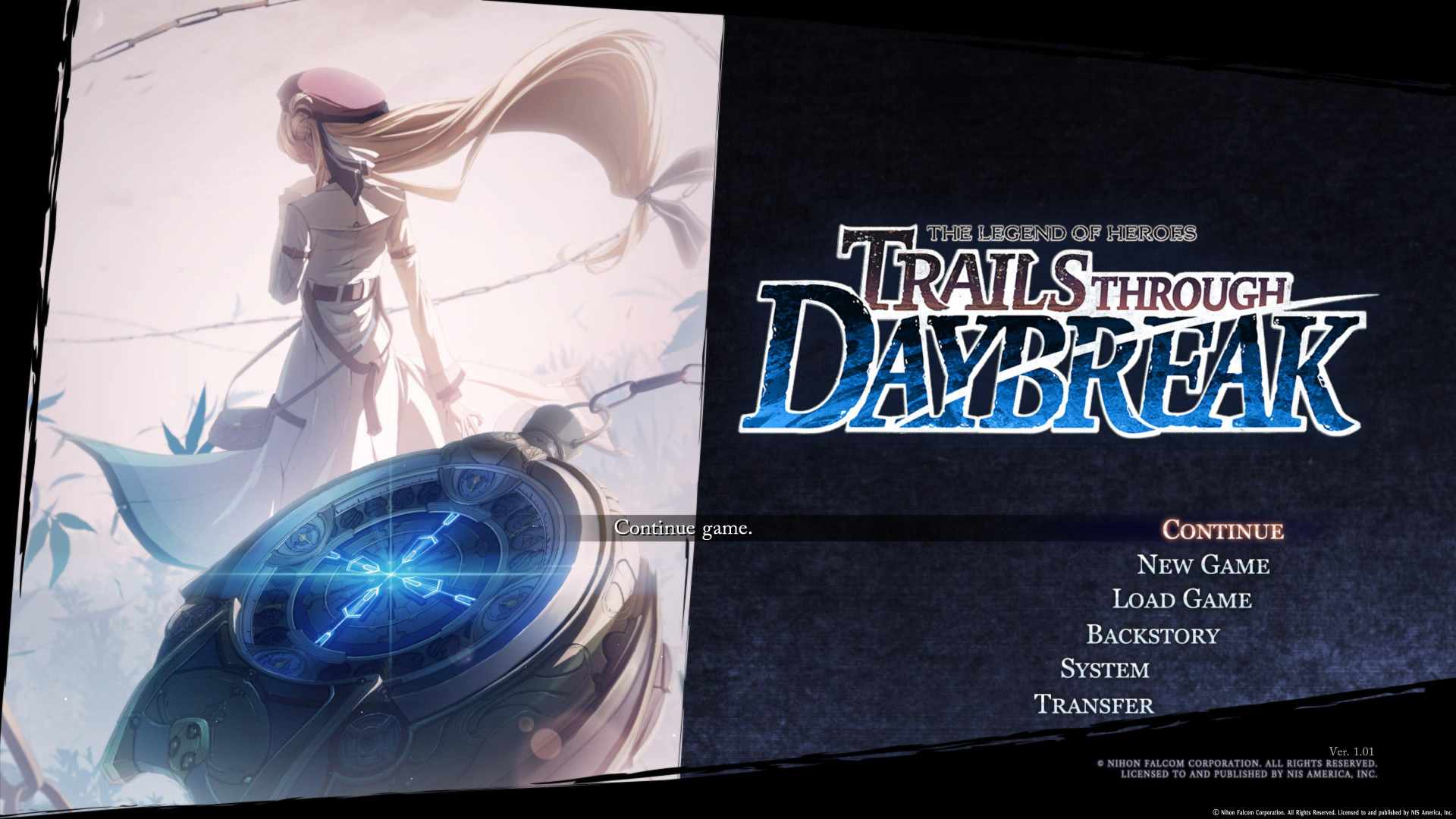The Cold Steel Series Just Grew Up!
- Developer: Nihon Falcom
- Publisher: NIS America
- Release date: 5th July 2024
- Genre: Action/Turn-Based JRPG
- Platforms: PlayStation 4 & 5, Nintendo Switch, Windows
- Reviewed on: PlayStation 5
- Game Supplied by: Publisher
The Legend of Heroes – Trails Through Daybreak PS5 Review
Many Western JRPG fans first discovered Falcom JRPG games through the Cold Steel series. Those games were initially released exclusively in Japan but began to get Western localized versions a few years later. The same can now be said of The Legend of Heroes: Trails Through Daybreak. Initially released for the PlayStation 4 in Japan on the 30th of September 2021, it’s now available to a worldwide audience.
Although set in the same universe as the Legend of Heroes series, “Trails Through Daybreak” is a brand-new adventure and a great starting point for anyone wishing to experience a Falcom JRPG. This game is set in the Calvard Republic, and you play as a 24-year-old private investigator named Van Arkride. Arkride runs a shady business that investigates matters clients prefer to keep away from the Police and the local Bracers.
You pick the story up when a high school student named Agnes Claudel arrives at his office to ask for help. Agnes is searching for the last creation of her grandfather, which, as the player will have seen in the early game cinematics, is something the underworld is willing to fight for. Thus begins the seemingly innocent start of a much grander adventure. This quest will take you through many varied locations where you will meet a platoon of characters along the way to either help or hinder your cause.
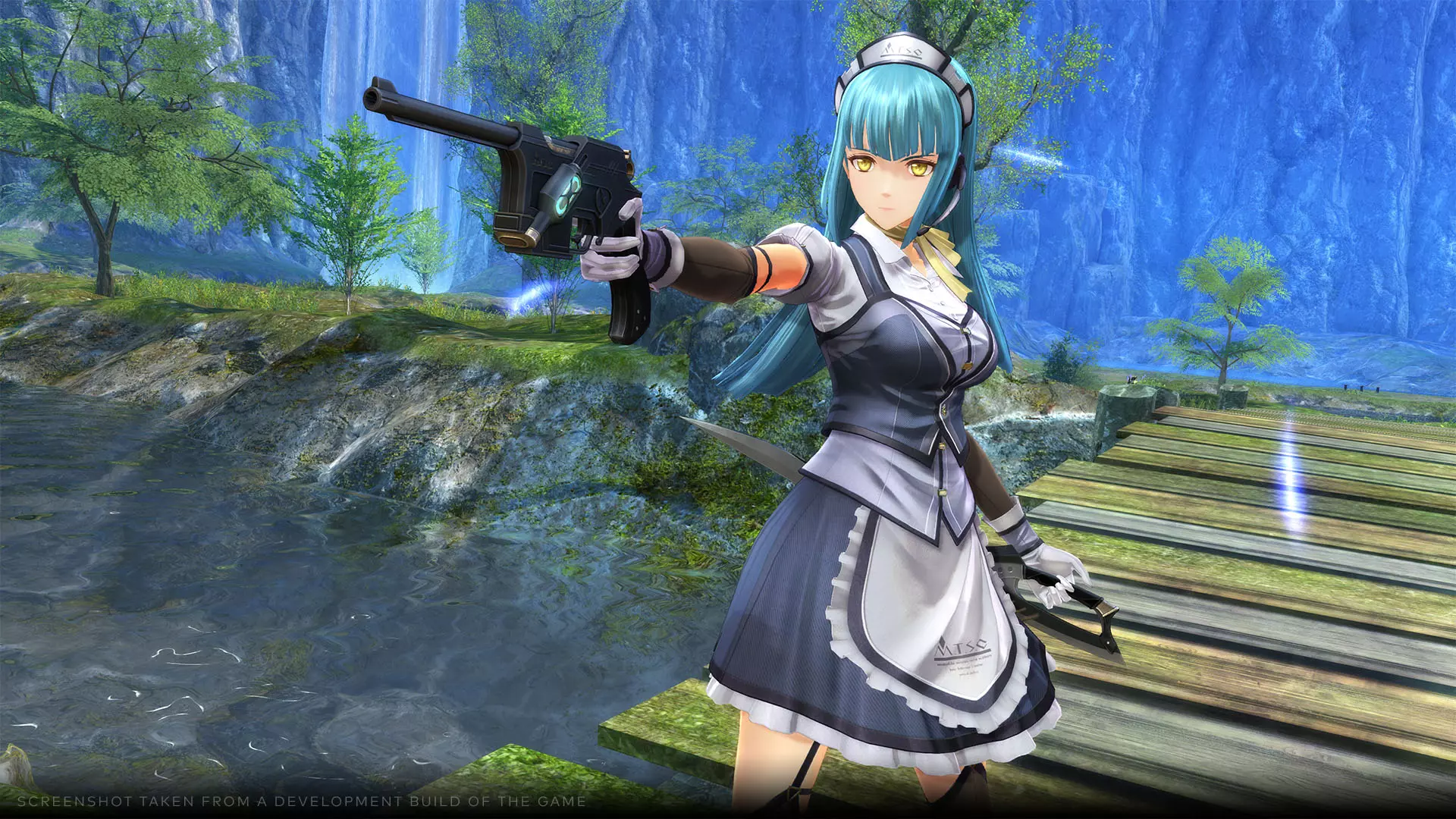
One of the biggest draws of the game is that, unlike previous Trails games where you play as a group of naive high school or college students, playing as Van Arkride in “Trails Through Daybreak” is far more engaging. The overall themes of the game are notably more mature—featuring elements like blood and strip clubs—which means the characters are more worldly, making them relatable and interesting. Van Arkride himself is a multifaceted character; he enjoys taking dates to the movies, exploring new cuisines, and is the proud owner of a used pickup truck.
As you meet and get to learn about the many other characters who join your team, each feels like a refreshing change of pace from what I had experienced before in the 500 hours I’ve spent immersed in the Cold Steel Series.
However, as compelling as the characters are, the overall narrative lacked the captivating ‘pop’ I anticipated. Trails games are known for their extensive length, necessitating a gripping storyline to maintain interest, which, regrettably, was absent in this installment. The onset of each chapter felt particularly laborious, as the game painstakingly introduced the themes of the upcoming segment. This approach came across as superfluous padding and a contrived effort at world-building, detracting from the desire to simply progress and delve deeper into the adventure.
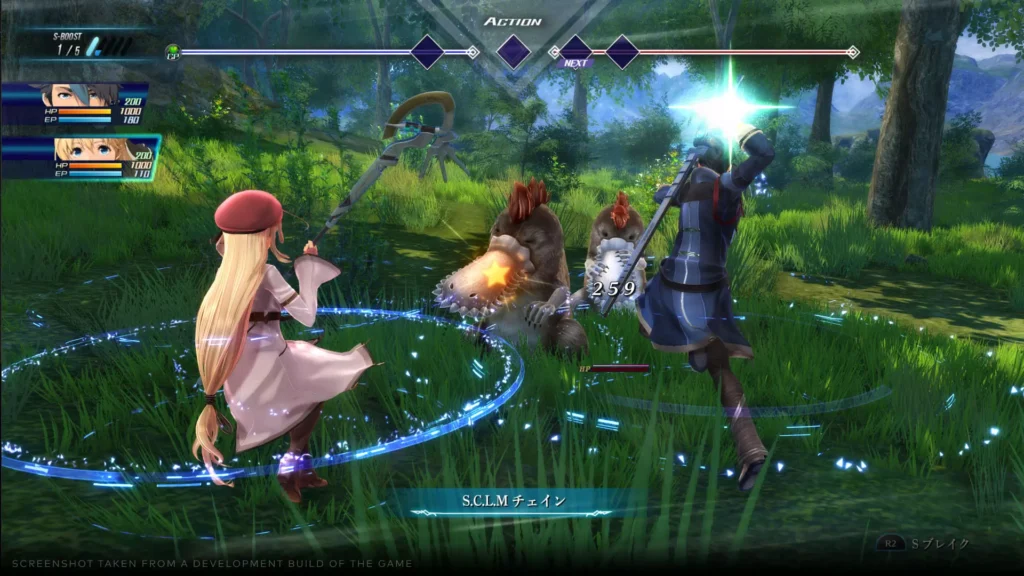
The world and environments within the game are wonderfully varied, featuring deserts, forests, and urban areas that all make welcome appearances. Additionally, the game runs on a new in-house engine which, while delivering a steady 60fps on the PS5, isn’t fully utilized by the game’s content.
As someone who has dedicated a considerable amount of time to the Trails series, I’ve noticed visual enhancements in comparison to previous titles. The textures, in particular, have seen significant improvement, as well as the fluidity of character motions. However, newcomers to the series may find the game’s aesthetics rather basic by contemporary standards. It’s somewhat disheartening to realize that we’re at the midpoint of the current console generation’s lifecycle, yet one of the stalwarts of the JRPG genre has yet to release a game exclusive to the current generation of hardware. One can’t help but speculate on the potential masterpieces Falcom could create if they shifted their focus from producing “remasters” to developing entirely new projects.
Setting aside the aforementioned concerns, the artwork and character models are, once again, exceptional. Despite the plethora of characters available for discovery, each one is imbued with a distinctive visual flair and identity that piques interest. The aspect of the game that stands out visually is the combat.
Combat has undergone a complete overhaul, striving to introduce a truly unique experience. The operative word here, however, is ‘strives.’ The combat system merges real-time hack-and-slash with a traditional turn-based approach, offering players the autonomy to choose their preferred style of play.
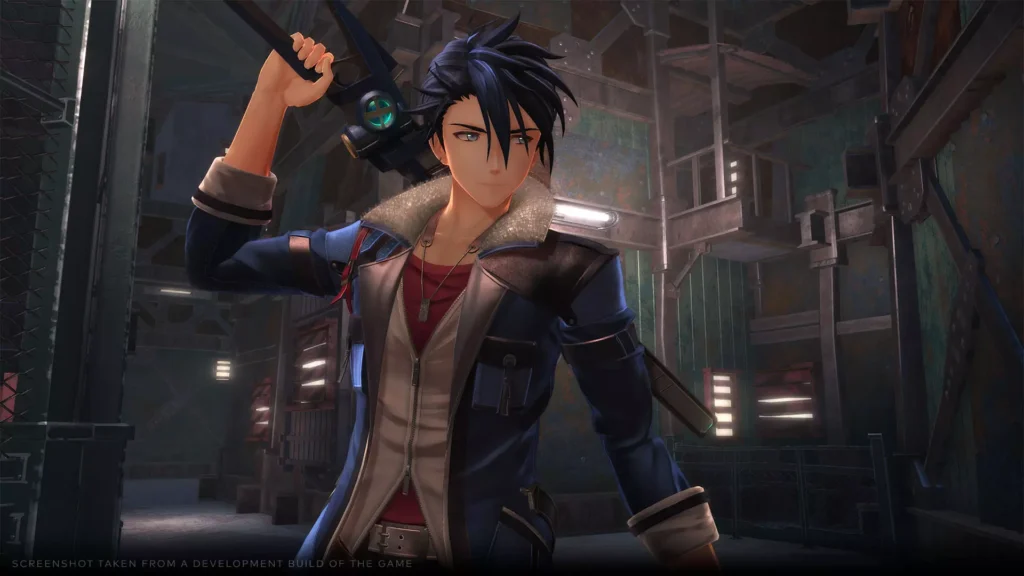
As I ventured across the field and encountered monsters, I wielded a melee weapon in a manner akin to traditional action-adventure games to initiate combat. I had the option to continue in this real-time mode or, at the press of a button, switch to turn-based actions to conclude the encounter. Initially, this fusion of gameplay styles struck me as remarkable. However, it became apparent that the real-time actions were quite rudimentary, boiling down to a repetitive cycle of attack, dodge, and rinse-repeat. Eventually, a third action was introduced, allowing me to build a gauge to stun opponents, but that was the extent of it.
You can mince through any enemy (except bosses) using real-time hack-and-slash actions, and to expedite battles against weaker foes, this became my strategy. However, the game seems to discourage completing fights solely in this manner. The intended design is for players to initiate battles in real time, land a stun attack, and then switch to turn-based combat. Yet, once you master the real-time mechanics, it becomes a more efficient—albeit monotonous—way to avoid damage compared to the turn-based system.
To inject more excitement into battles, and to experience the impressive animation wind-ups, I reverted to the classic turn-based approach. This choice, however, pushed my resources to their limits, even on normal difficulty, prompting a return to the safer but duller real-time hack-and-slash to progress.
Despite my appreciation for the innovative dual combat system, which is a brilliant concept in theory, its practical implementation favours turn-based mechanics. Nonetheless, the combat was engaging and, at times, thrilling—particularly during boss encounters. It’s unfortunate that the majority of skirmishes with the game’s common enemies tended to be somewhat tedious and repetitive.
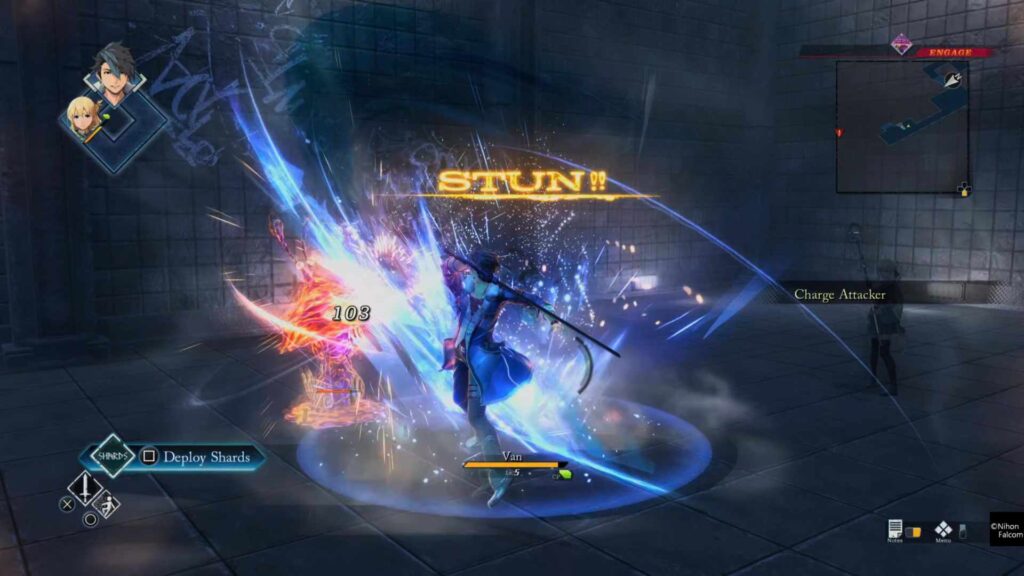
The RPG elements of the game lived up to expectations, offering a rich and diverse experience. While listing out all the attributes, collectible items, and ways to enhance character stats might be tedious, the extensive customization options for character builds and spell choices made it engaging to experiment with creating the “perfect” team.
However, my main critique of the RPG mechanics is the overwhelming number of attributes for each character, which made it difficult to determine the optimal allocation of items. This issue was compounded by one of my major grievances with the game: the minuscule text size. And before anyone suggests that my eyesight might be the problem (I’m looking at you, editor), I’ll have you know I’ve recently passed an eye test with flying colours! So, if I’m straining to discern the tiny text on a 40-inch TV screen—such as an enemy’s elemental weaknesses during combat—I’m confident other players are facing the same struggle.
The menu system has also been overhauled, and not for the better. Normally I can work my way around menus with casual aplomb, but important details you may like to change can be buried deep in a place that’s hard to find.
Lastly, there is the audio. I’m not a huge fan of Falcom BGM’s because a lot of the time it just sounds like elevator music. The Persona series for example knows how to knock out banger after banger, but Falcom just isn’t in that league. Even more egregious is that I recognized some re-hashed music from previous games; games I’ve already spent hundreds of hours with, listening to the same tracks even more!
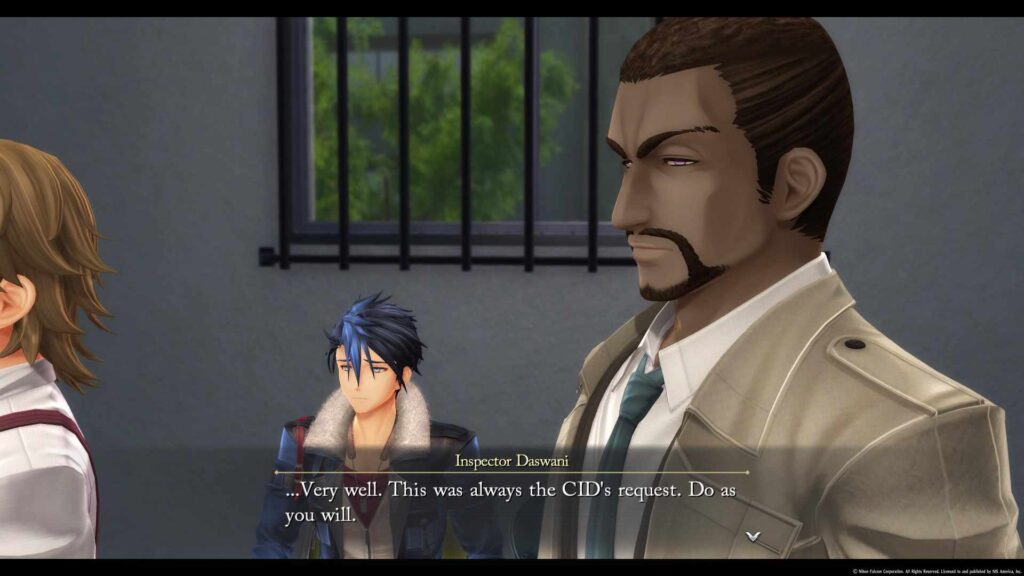
But when it came to the voice acting and battle sequences, the audio was ramped up and superb. Even the most mundane of battles felt exciting due to the battle effects of the real-time sword attacks, or deep authentic sounds of spells being launched and subsequent hits.
If you are familiar with Falcom games, Trails Through Daybreak, does feel like an attempt at crossing over two of their biggest series into one. A Y’s game merged with a Legend of Heroes. It does work, and as a first attempt is very commendable, but it most certainly needs work for any future games.
Lastly, and to some Falcom fans, this may prove to be very important. For once, Falcom has made a game with an actual proper ending! It obviously can be expanded upon for future iterations of the series, but unlike every other Falcom game I’ve played, I felt satisfied when getting to the end of this one. The only issue is, that there was quite a bit of tedium, especially the drawn-out last chapter, to get there
Summary
“Trails Through Daybreak” offers a fresh Falcom JRPG experience with a new adventure set in the Calvard Republic. The game features deep RPG elements, allowing for extensive customization and team-building. The combat system introduces an innovative blend of real-time hack-and-slash and turn-based mechanics, although it tends to favour the latter due to limited real-time actions.
The game’s environments are diverse and visually appealing, running smoothly at 60fps on the PS5. Visual improvements are noticeable, especially in textures and character motions, but the game’s graphics may seem basic by modern standards. The menu system is less user-friendly, and the small text size can be a strain to read.
While the background music is not as memorable as other titles, the voice acting and battle sounds are impressive, enhancing the excitement of combat. The game feels like a crossover of Falcom’s Ys and Legend of Heroes series, and while it’s a commendable effort, there’s room for improvement.
A notable positive is the game’s satisfying ending, which is a departure from Falcom’s usual open-ended narratives. Despite some tedium, particularly in the final chapter, the game provides a complete and gratifying conclusion.
